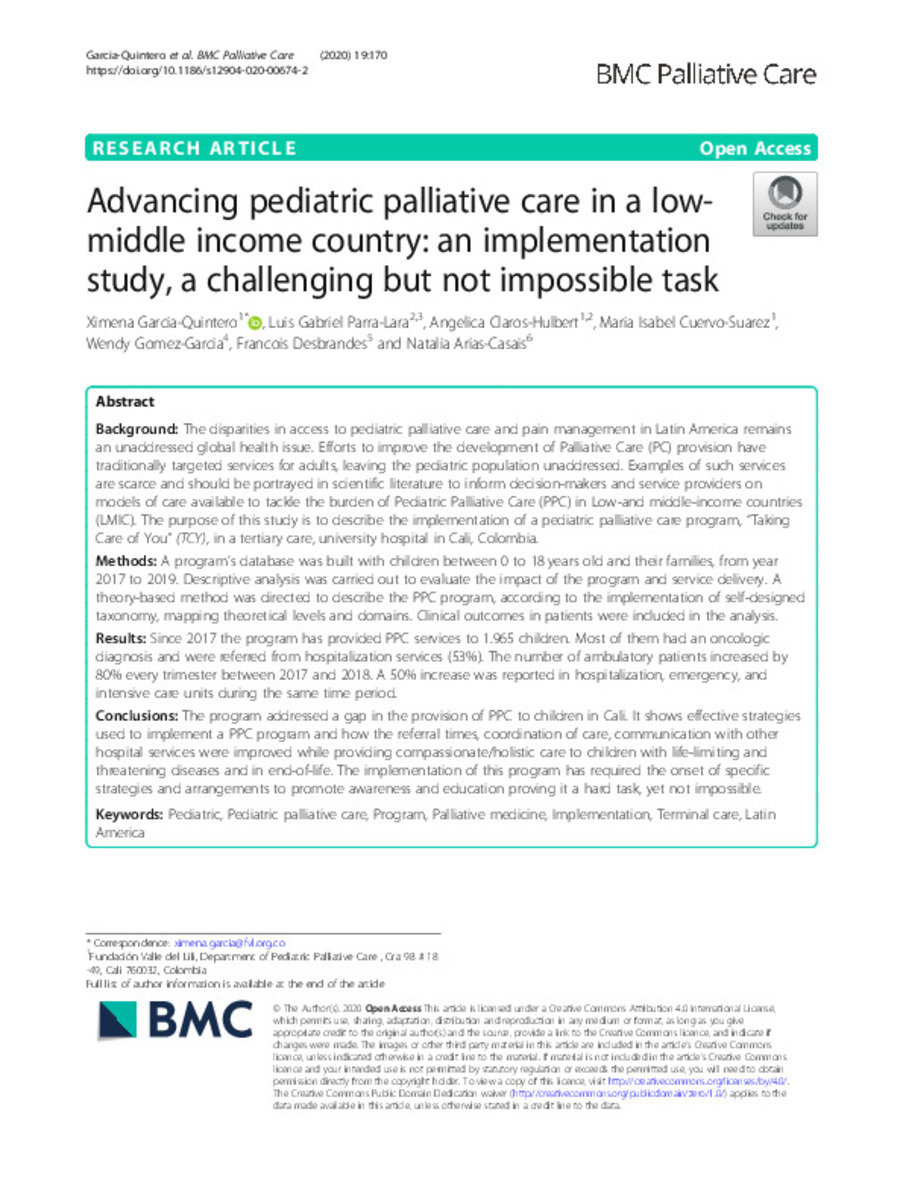Advancing pediatric palliative care in a low-middle income country: an implementation study, a challenging but not impossible task
Keywords:
Pediatric
Pediatric palliative care
Program
Palliative medicine
Implementation
Terminal care
Latin America
Note:
This article is licensed under a Creative Commons Attribution 4.0 International License
Citation:
García-Quintero, X. (Ximena); Parra-Lara, L.G. (Luis Gabriel); Claros-Hulbert, A. (Angelica); et al. "Advancing pediatric palliative care in a low-middle income country: an implementation study, a challenging but not impossible task". BMC Palliative Care. 19:170, 2020,
Statistics and impact
0 citas en

0 citas en

Items in Dadun are protected by copyright, with all rights reserved, unless otherwise indicated.







